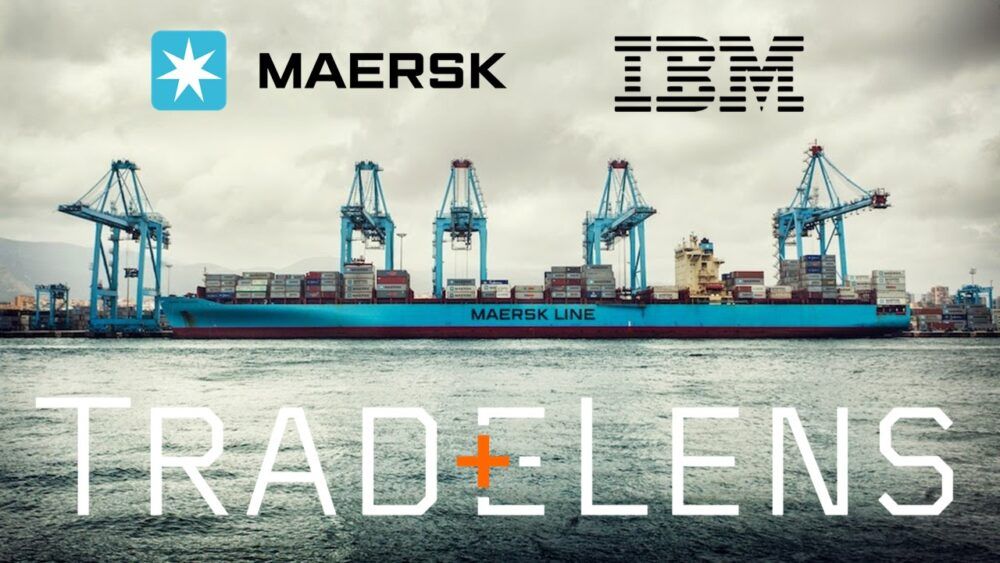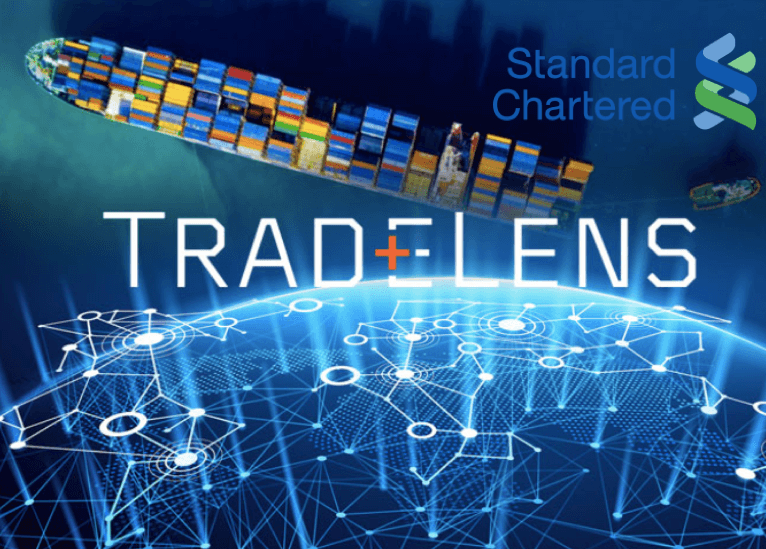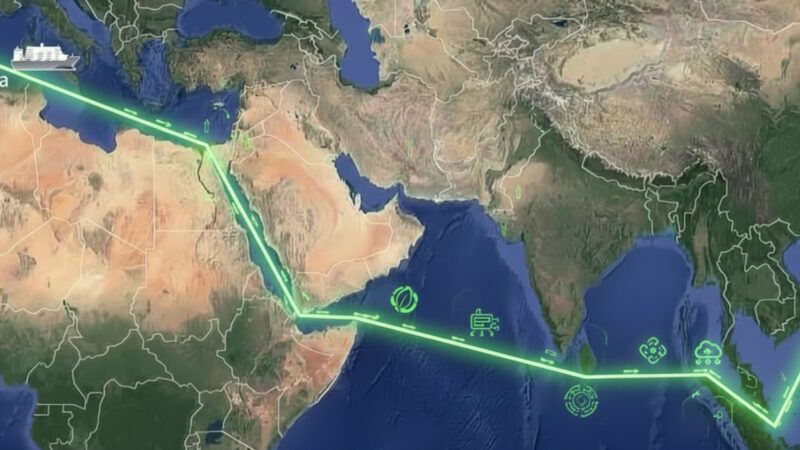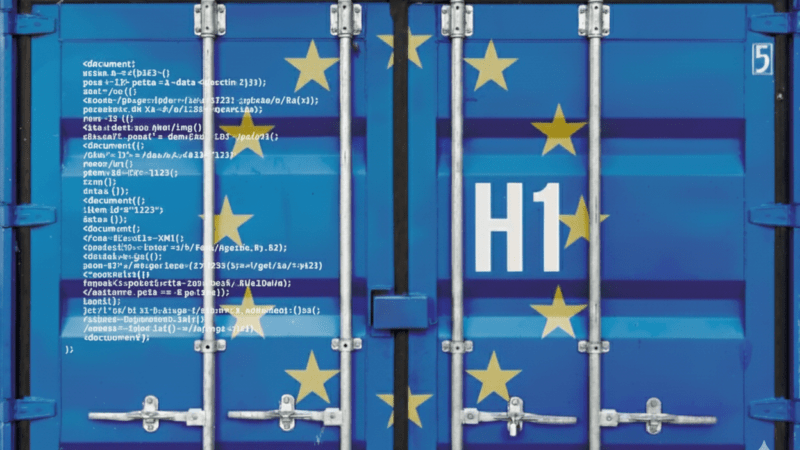 TradeLens disappears but has demonstrated that blockchain architecture can solve several problems related to cargo traceability (TradeLens).
TradeLens disappears but has demonstrated that blockchain architecture can solve several problems related to cargo traceability (TradeLens).
The closure of TradeLens: when technology is not enough
TradeLens, Maersk's blockchain-based digital logistics platform, has announced that it will cease operations in the first quarter of 2023. What are the reasons and consequences of this decision?
 TradeLens disappears but has demonstrated that blockchain architecture can solve several problems related to cargo traceability (TradeLens).
TradeLens disappears but has demonstrated that blockchain architecture can solve several problems related to cargo traceability (TradeLens).
TradeLens, the technology platform developed by IBM and Maersk, was born in 2018 with an ambitious goal: to bring together all global maritime logistics in a single system to achieve full traceability and digitisation of cargo.
However, just four years later, AP Moller Maersk's Head of Business Platforms, Rotem Hershko, announced on the 30th of November that "while we have successfully developed a viable platform, the need for full global industry collaboration has not been achieved. As a result, TradeLens has not reached the level of commercial viability necessary to continue to operate and meet financial expectations as an independent company."
An incomplete collaboration
Andrés Garrido, co-founder and CEO of ChainGo Tech, a start-up that develops blockchain-based technology solutions that improve information flows associated with logistics processes, and professor at the Spanish Maritime Institute, acknowledges his "surprise" at the announcement.
"The TradeLens project began to take shape in 2016. The main doubt was whether Maersk would be able to involve other shipping companies in the process. Although it took a long time, in 2019 it managed to get MSC or CMA CGM to enter the system after changing the incentive and governance model to give more transparency and visibility to the rest of the shipping lines," he explains.
However, they have not managed to seduce two other key players: shippers and freight forwarders.
In the case of the shippers, Garrido says Maersk did not convince them of the added value of the platform to make an extra financial effort in exchange of the visibility as owners of the goods.
Involving freight forwarders was practically a losing battle from the start, as their doubts always existed. Garrido shares with PierNext that he spoke to several professionals and they expressed their doubts as to whether the shipping company's real interest was to disintermediate and reduce the value that freight forwarders bring to the logistics chain.
Garrido believes that, possibly, there has been a lack of incentives attractive enough to attract shippers and freight forwarders.
"One could be the cost, that certain document management would be sufficiently attractive economically speaking. Another incentive, access to information for the same or lower price than other competitors. The third incentive would be to encourage the freight forwarder to enter as a partner and to obtain a margin by getting their clients to join and share information," he proposes.
Javier Gallardo, director of Portic, the port community system (PCS) of Barcelona, shares a similar opinion. "Customers want traceability but they are not willing to pay such a high additional cost as TradeLens proposed. A flat fee or a lower cost would make more sense," he says.
On the other hand, the benefit of the data provided beyond the shipping lines was small. "Their value proposition for information providers at terminals, PCS or freight forwarders was very low and did not generate value. Why should I provide my data to the TradeLens service if I don't get similar compensation?" asks Gallardo.
The lack of incentives to convince shippers and freight forwarders, cost overruns and the governance model are the main reasons for the closure of TradeLens
Data governance: privacy vs. decentralisation
Garrido also has a view on the blockchain architecture underpinning the platform, which was designed on IBM Hyperledger Fabric's private network: "The emphasis is not on decentralisation but on information privacy, which is obviously very important in the sector. However, the consequence of data governance being centralised by the main players gives a sense of opacity," he argues.
For the expert and entrepreneur, this decision based on a system of nodes whose information is accessed according to the contracted level of visibility blurred data governance.
"The platform is extremely secure. The channels and flows that are created give complete security that, depending on your role, you will have access to very limited information.
The fact that it is managed by a player like Maersk, which has specific interests within the logistics chain, can raise some suspicions. With the other shipping lines, they solved it because they made it clear that their commercial information was not going to be available to Maersk," he says.
Regarding the technology, Gallardo believes that "the high technological costs of the platform mean that the price to be paid by customers is also high. It is possible that a more traditional technology could have provided the same service at a lower cost.”
The advantages of TradeLens for ports
In the case of ports and terminals, Garrido says the added value of TradeLens was more obvious; providing them with cargo information well in advance, a much-lauded feature of the platform.
An example of this collaboration is reflected in the agreement between Portic and TradeLens, as Jaume Bagot, head of process improvement at the Port Authority of Barcelona, points out. As part of this agreement, the Port had access to information on containers moving through the port in advance, as well as knowing their origin and destination in cases where the shipping company organised door-to-door transport.
"This allowed value-added services for port users such as terminals, land transport companies and shippers," he explains.
In return, Portic provided TradeLens with information on events of interest to the shipping lines connected to the platform, such as the date of customs clearance or the date of delivery. Tests were already underway to share other data, such as all that related to operations associated with the arrival or departure of the means of transport involved in an operation or their loading and unloading.
Bagot highlights as one of the advantages that "TradeLens also offers the possibility of incorporating some documents related to transport contracts and this can be useful for certain administrations such as Customs, which can view information such as the bill of lading, packing lists or commercial invoices without having to request them from the declarant," he explains.

The lessons TradeLens taught us
Although it did not succeed, the fact that Maersk, "the most digital shipping company in the world", has made such a strong commitment to blockchain shows that this technology is capable of solving various problems and managing thousands of documents and containers. "Another thing is its marketing, business model or that it was looking for overly ambitious goals, but TradeLens has shown us the way forward," says Garrido.
Despite the closure, "Maersk has not abandoned blockchain technology at all. They are going to internalise everything they have advanced and learned at TradeLens to incorporate it into their own internal departments," he explains.
ChainGo Tech, a start-up of which Garrido is CEO, did in fact have several meetings with TradeLens to collaborate. However, he shares that the bureaucratic processes of IBM, the platform's technology partner, put them off. "Personally, I don't know of any start-up working on blockchain and digitalisation that collaborated with the platform," he says.
Could the closure have been avoided?
Without knowing the exact internal details of this decision, the expert believes that TradeLens has set itself "extremely ambitious" goals; to achieve global collaboration of all the agents involved in maritime logistics. "There are a lot of companies that are covering smaller segments,like ourselves, to focus on more specific problems. TradeLens tried to digitise everything and that is very difficult, but they have come a long way and have gained a lot of support," he continues.
For Garrido, a joint venture between two companies of this size requires a "very aggressive" business plan. When the objectives are not being met, it is not unusual for one of the two to decide to allocate these resources to another activity.
"If it had been a business line or a private company launching the platform independently it would have been a different story. They could have pivoted to introduce changes, but with two such large companies it's much more difficult because you don't have that flexibility, you have to make quick changes and you can't.”
Gallardo believes that TradeLens should have opted for a service with more added value and greater complexity, such as eBL (e-bill of lading). However, the integration and change management costs were even higher.
"We had to raise the stakes, and here the diversity of shipping lines is a very important factor. The eBL solution competes with the solutions that the shipping lines themselves are developing. It doesn't seem to be an easy task to reach an agreement," he acknowledges.
For Portic's director, TradeLens has shown that there is a need and that it is feasible to provide traceability. However, a more economically sustainable formula or one that is supported by other services needs to be found.
"The proposal of the IPCSA (International Port Community Systems Association), through the Network of Trusted of Networks initiative, can be an alternative. It is based on a 'PCS Network' offering homogeneous and standardised traceability information between ports," adds Gallardo.
Is there an opportunity for Global Shipping Business Network (GSBN) to take the place left vacant by TradeLens? “This initiative is promoted by the Chinese government to prevent its ports from entering a Western system and to manage its own, which is why most shipping companies operating in Asia are part of this platform. It is true that GSBN has launched more specific products without covering as much as TradeLens, although I am quite unfamiliar with how it works," Garrido confesses.
Bertrand Chen, CEO of GSBN, assessed in this article the closure of its competitor, pointing to the reasons already given by the experts consulted, such as its ambitious plan, the fact that it was customised for a single shipping company and a scenario that was not lacking in competition.
TradeLens disappears, but not the goal of digitising maritime logistics with blockchain as an enabling technology.






